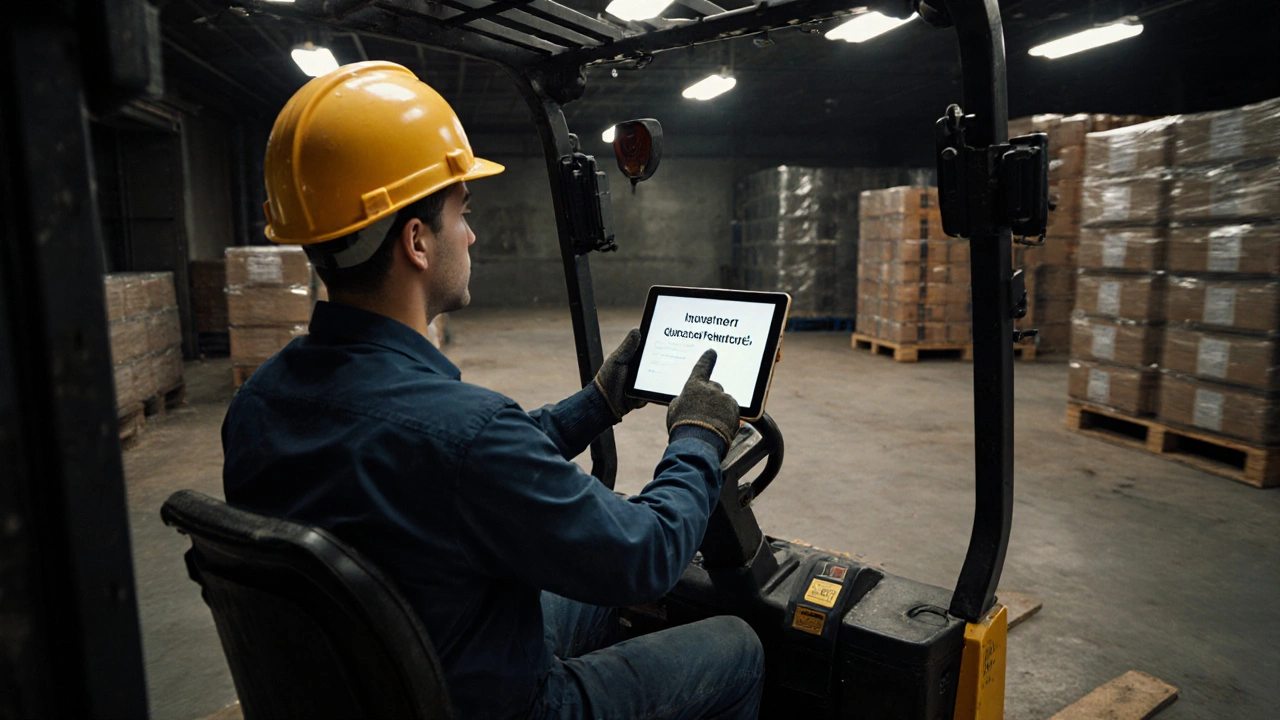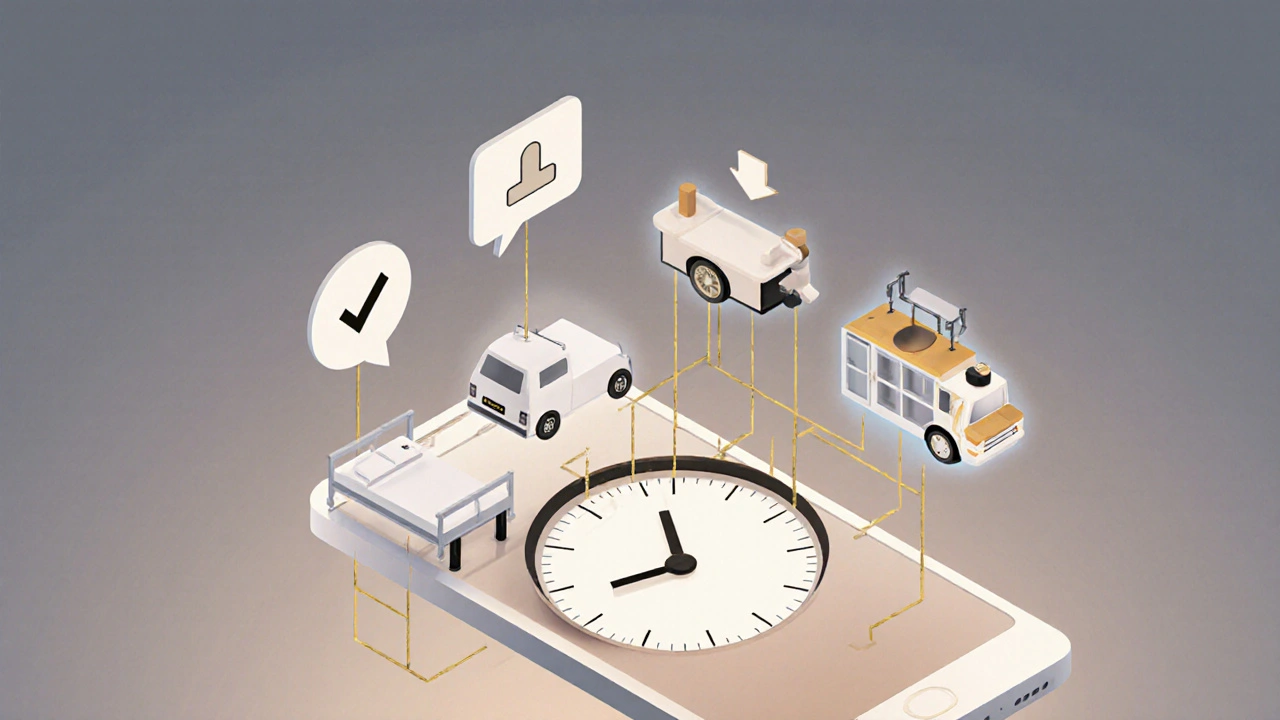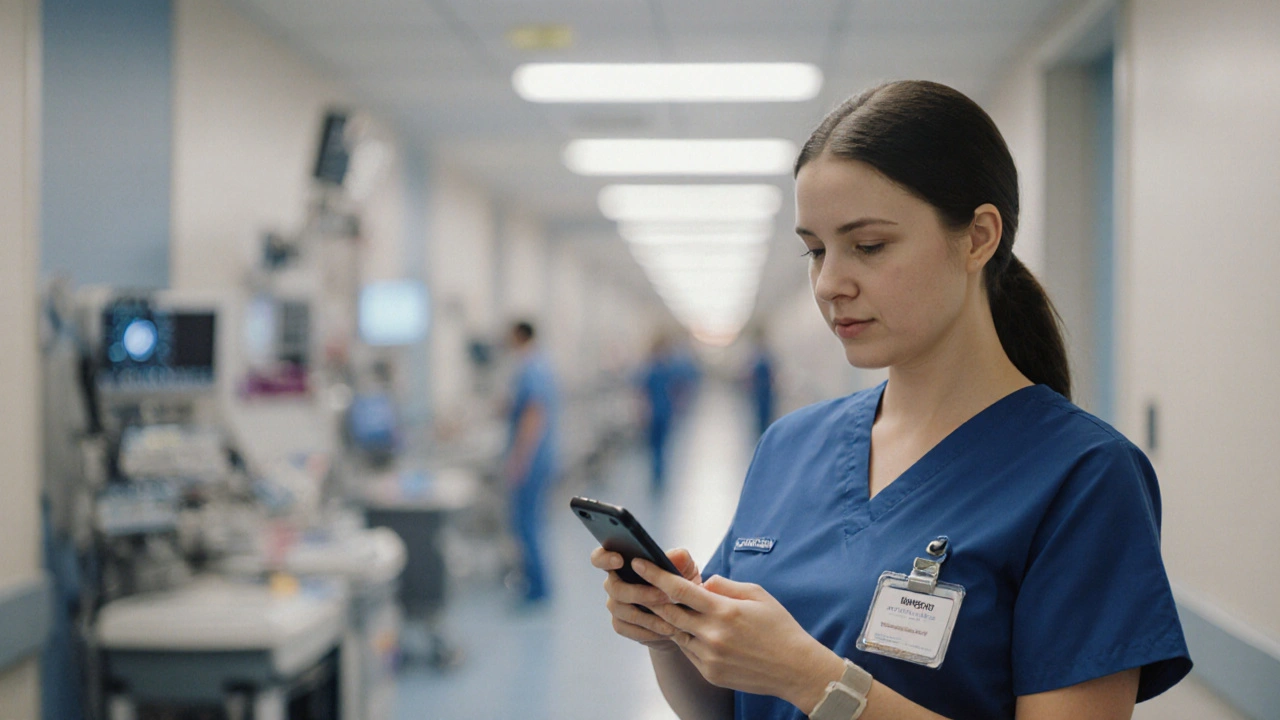Most people check their phones 58 times a day. That’s not addiction-it’s habit. And if you’re trying to learn something new, why not use that habit to your advantage? Microlearning on mobile devices isn’t just trendy. It’s the most practical way adults learn today. Whether you’re a nurse between shifts, a warehouse worker on break, or a parent squeezing in study time before bedtime, short, focused lessons delivered on your phone fit where your life already is.
What Microlearning Actually Means (And What It Doesn’t)
Microlearning isn’t just cutting a 30-minute video into six five-minute clips. That’s just fragmentation. Real microlearning is designed from the ground up to deliver one clear outcome in under five minutes. Think: how to adjust a IV drip, how to file a timesheet, how to say "I need help" in Spanish, or how to reset a password on the company portal.
Each lesson has one objective. One action. One takeaway. No fluff. No intro music. No long-winded explanations. You open the app, you learn, you do. That’s it. A study from the University of California found that learners who used microlearning retained 80% more information after 30 days compared to those who sat through hour-long lectures.
The key? Focus. Microlearning works because it matches how the brain actually learns-not by soaking up information, but by practicing it in small, repeated doses.
Why Mobile Is the Only Device That Matters
Laptops and desktops are for deep work. Phones are for life. And learning happens in life’s gaps-waiting for the bus, standing in line, walking to the car, during a coffee break. Mobile devices are always with us. They’re personal. They’re immediate.
Compare this to a corporate training portal that requires you to log in on a desktop during work hours. Most people never get around to it. But a push notification on your phone? That’s different. It’s like a text from a friend: short, friendly, impossible to ignore.
Mobile learning also supports accessibility better than any other platform. Voice narration helps people with low vision. Closed captions work for those in noisy environments. Offline mode lets learners in areas with poor internet-like rural towns or remote job sites-download lessons and learn without connection. That’s not a bonus. That’s a necessity.
Best Practice #1: Keep It Under 3 Minutes
Three minutes is the sweet spot. Not five. Not seven. Three. Why? Because that’s about how long the average adult can sustain focused attention on a mobile screen without distraction.
Here’s what a good three-minute lesson looks like:
- 0:00-0:20 - Quick hook: "You made this mistake on your last shift. Here’s how to fix it."
- 0:21-2:00 - One clear demo: A 45-second video showing exactly how to scan a barcode with the new app.
- 2:01-2:45 - One quick quiz: "Which button do you tap next?"
- 2:46-3:00 - One action prompt: "Do it now. Open the app and try it before your next break."
That’s it. No theory. No backstory. Just what you need, when you need it.
Best Practice #2: Design for One Action
Every microlesson should end with a single, doable action. Not "learn about compliance." Not "understand team dynamics."
Instead: "Send this message to your supervisor using the new template." or "Mark this patient’s vitals in the system." or "Record your hours before 5 PM."
Actions stick. Concepts fade. When you link learning directly to behavior, retention spikes. A 2024 study by the Learning and Performance Institute showed that learners who completed an action after each microlesson were 67% more likely to apply the skill on the job within a week.

Best Practice #3: Use Real Context, Not Stock Photos
Stop using generic stock footage of smiling people in offices. Your learners aren’t in a studio. They’re in a hospital corridor, a delivery van, a warehouse aisle.
The best microlearning uses real environments. Film the actual app your team uses. Show the real scanner they scan with. Record the actual checklist they fill out. Even if the video is shaky and the lighting’s bad-it builds trust. Learners think, "That’s my desk. That’s my tool. This is for me."
One healthcare provider in New Zealand switched from polished corporate videos to footage shot by frontline staff using their own phones. Completion rates jumped from 42% to 89% in six weeks.
Best Practice #4: Build in Spaced Repetition
One-time learning doesn’t stick. But repetition does-when it’s spaced out.
Good microlearning platforms don’t just push lessons. They remind you. A nurse who learned how to document patient falls on Monday gets a 24-hour reminder: "Did you use the new form?" Then a 72-hour nudge: "Here’s a quick refresher." Then a 7-day quiz: "What’s step 3?"
This isn’t spam. It’s scaffolding. The brain needs time to consolidate. Spaced repetition is proven to double long-term retention. Apps like Anki and Quizlet use it for language learning. The same principle works for job skills.
Best Practice #5: Let Learners Control the Pace
Some people need to pause and replay. Others want to skip ahead. Mobile learning must support both.
Always include:
- Play/pause buttons
- Speed controls (0.5x to 2x)
- Progress indicators ("You’re 60% through")
- Download option for offline use
One manufacturing company in Auckland found that workers who could control playback completed lessons 40% faster than those forced to watch at fixed speed. And they reported higher satisfaction.
Best Practice #6: Make It Social
Learning is social-even on a phone. Add a simple comment thread after each lesson. Let learners ask questions. Share tips. Say, "I did this and it saved me 10 minutes."
One retail chain added a "Quick Tip" feature where employees could record 30-second videos of how they solved a common problem. Within a month, 200 tips were shared. The top three became official training modules.
People learn from each other. Not from PowerPoint slides.

Best Practice #7: Track What Matters
Don’t track completion rates. Track application.
Did they use the new procedure? Did they reduce errors? Did they finish their task faster? That’s the real metric.
One logistics company stopped counting how many people watched the safety training. Instead, they tracked how many near-misses were reported in the week after training. The number dropped by 53%. That’s the number that matters.
Use simple dashboards: "87% of users applied this skill in their last shift."
What Doesn’t Work
Don’t turn your LMS into a mobile app with 50-hour courses chopped into 5-minute chunks. That’s not microlearning. That’s frustration.
Don’t use bloated platforms that require logins, passwords, and five clicks to get to a lesson. If it takes longer than 10 seconds to start learning, people won’t do it.
Don’t ignore accessibility. If your lesson doesn’t work with screen readers or doesn’t have captions, you’re excluding people. That’s not just bad design-it’s unethical.
Getting Started
You don’t need fancy tools. Start small.
- Pick one task your team struggles with.
- Record a 90-second video showing how to do it correctly.
- Add a one-question quiz: "What’s the first thing you check?"
- Send it via WhatsApp, Teams, or a simple app like EdApp or TalentLMS.
- Ask for feedback: "Was this clear? What’s missing?"
Do that once a week. In a month, you’ll have a library of 4 lessons. In three months, you’ll have changed how your team works.
Final Thought: It’s Not About Technology. It’s About Respect.
Microlearning on mobile works because it respects people’s time. It doesn’t demand hours. It doesn’t guilt-trip. It doesn’t treat adults like students in a classroom.
It says: "You’re busy. Here’s what you need. Right now. No extra steps."
That’s the difference between training that’s ignored-and training that sticks.
How long should a microlearning lesson be?
The ideal length is under three minutes. Most effective lessons are 90 seconds to 2 minutes 30 seconds. This matches the average attention span on mobile devices and allows learners to complete the lesson during a short break without distraction. Lessons longer than five minutes lose effectiveness because they start to feel like traditional training again.
Can microlearning replace full training programs?
No-not on its own. Microlearning excels at reinforcing skills, updating knowledge, and delivering just-in-time support. But complex topics like compliance certification, leadership development, or technical certifications still require deeper, structured learning. Use microlearning as a companion: teach the basics in a full course, then use microlessons to reinforce and refresh them weekly.
Do I need special software for microlearning?
Not necessarily. You can start with free tools like WhatsApp, Google Forms, or Canva to create simple video lessons and quizzes. For scaling, platforms like EdApp, TalentLMS, or Axonify are designed specifically for mobile microlearning. They offer analytics, spaced repetition, and offline access. But the most important tool isn’t software-it’s clarity of purpose.
How do I measure if microlearning is working?
Stop tracking clicks and completion rates. Track behavior change. Are employees using the new procedure? Are errors down? Are tasks faster? Use simple surveys: "Did you use this tip in your last shift?" or track system data: "How many people used the updated form?" Real impact is shown in performance-not participation.
Is microlearning effective for older learners?
Yes, especially when designed with accessibility in mind. Older learners often prefer short, clear lessons they can revisit. Use larger text, voice narration, simple navigation, and offline access. A 2025 study in aged care facilities showed that staff over 50 completed microlearning modules at the same rate as younger workers-when the interface was clean and the content relevant to their daily tasks.
Can microlearning work without internet access?
Absolutely. Many platforms allow lessons to be downloaded for offline use. This is critical for workers in remote areas, warehouses with poor signal, or delivery drivers. A good microlearning system lets users download lessons during Wi-Fi time and access them later without data. The key is planning ahead-schedule downloads during breaks or shift changes.
If you’re looking to improve how your team learns, start with one small lesson. Make it real. Make it quick. Make it useful. Then watch how quickly it spreads-not because it was mandated, but because it actually helped.


Comments
Kenny Stockman
Been using microlearning for my nursing crew and holy crap it actually works. One 90-second video on how to log meds in the new system? We went from 40% compliance to 95% in two weeks. No lectures. No forms. Just a quick clip during coffee break. People actually remember it now.
Antonio Hunter
I’ve spent the last decade designing corporate training programs and I can tell you this: most organizations mistake microlearning for content fragmentation. What’s described here isn’t just cutting videos shorter-it’s cognitive redesign. The brain doesn’t store information like a hard drive; it builds neural pathways through repetition, context, and immediate application. When you strip away the fluff and anchor each lesson to a single, actionable behavior, you’re not just teaching-you’re rewiring habits. That’s why retention spikes. That’s why it sticks.
Paritosh Bhagat
Wait, so you’re saying we should stop using fancy LMS platforms and just send videos via WhatsApp? 😅 That’s not innovation, that’s laziness. And who wrote this? Someone who’s never had to train warehouse workers with 3rd-grade reading levels? Also, ‘no fluff’? What about proper grammar? ‘You open the app, you learn, you do.’ That’s not a sentence. That’s a tweet. And don’t get me started on ‘shaky videos’-if you can’t afford decent lighting, maybe your training isn’t worth the bandwidth.
Ben De Keersmaecker
Interesting piece, but I’m curious about the citation for the University of California study. Was it peer-reviewed? The Learning and Performance Institute’s 2024 study-any DOI? And when you say ‘real context,’ do you mean ethnographic filming, or just using employees as amateur videographers? Also, ‘no intro music’ is fine, but what about audio cues? For auditory learners, a subtle chime before the action prompt could reinforce retention. Just saying.
Aaron Elliott
Let me be perfectly clear: this is not innovation. It is the commodification of attention. You are not teaching. You are conditioning. You are reducing human cognition to a Skinner box with push notifications. The notion that a 90-second video can replace deep understanding is not just naive-it is dangerous. What happens when the technician needs to troubleshoot a system he’s never seen before? When the nurse encounters a deviation from protocol? You’ve trained automatons, not professionals. And for that, I am deeply disappointed in our educational culture.
Chris Heffron
Love the part about spaced repetition 😊 I use Anki for Spanish and it’s a game-changer. Same principle applies here. Also, the ‘do it now’ prompt? Genius. I tried it with my team-sent a 2-min clip on how to scan pallets, then said ‘do it before your next break.’ 12/15 did. One guy even sent me a pic of him scanning with the app open. 😄
Nick Rios
My dad’s 62 and works night shift at a warehouse. He hates tech. But he watches the 2-minute videos on his phone while he waits for the forklift. Says it’s the only thing that doesn’t make him feel stupid. No login. No password. Just a link in a text. That’s respect.
Tina van Schelt
Someone finally gets it. We stopped forcing 45-minute compliance trainings and started sending ‘One Thing’ clips-like ‘how to unjam the coffee machine without calling maintenance.’ Now people send us their own clips. One guy filmed himself fixing the printer with a rubber band and a paperclip. We made it the official guide. That’s not training. That’s culture.
Ronak Khandelwal
OMG YES!! 🙌 I run a microlearning program for rural teachers in India-no internet for 3 days straight? They download during Sunday wifi at the temple. One lesson: how to explain fractions using mangoes. 90 seconds. 87% of them used it next week. 💯 Learning isn’t about fancy apps-it’s about meeting people where they are. And their phones? That’s home.
Jeff Napier
Microlearning? More like mind control. Push notifications are designed to hijack dopamine. You think you’re learning? You’re being conditioned by Silicon Valley’s attention economy. Next thing you know, they’ll be vibrating your phone every time you forget to wash your hands. This isn’t education. It’s behavioral surveillance dressed as helpfulness.
Sibusiso Ernest Masilela
How dare you suggest that real professionals-people who actually know how to lead-can be trained with 3-minute videos on phones? This is what happens when you let tech bros run HR. Real leadership requires deep reflection, mentorship, and years of experience-not a TikTok-style clip showing how to file a form. This isn’t progress. It’s the death of dignity.
Daniel Kennedy
One thing missing: feedback loops. The best microlearning doesn’t just push content-it pulls insight. We added a one-tap ‘this helped’ or ‘this confused me’ button after each lesson. Got 1,200 responses in a month. Used them to rewrite 70% of our videos. You don’t need a focus group. You just need to ask. And listen.
Taylor Hayes
My sister’s a home health aide. She uses these microlessons during her lunch break. Said the one on how to turn a patient without hurting her back saved her from a hernia. No one mandated it. She found it on her own. That’s the magic. It’s not forced. It’s found. And that’s why it works.
Sanjay Mittal
Started with one 90-second clip on how to use the new inventory app. Sent it via Telegram. Two weeks later, 83% of staff used it daily. No one quit. No one complained. Just better work. No fancy platform needed. Just clarity. And a little trust.